Circular route Kaiserpfalz
The Kaiserpfalz historical circular route will help you find your way around the Kaiserpfalz archaeological zone. The circular route takes you to all points of historical interest where the history of the palace can be traced. The stations are colour-coded according to the five building phases of the Palatinate’s history. For each construction phase, there is a special information point with detailed information on site.
Information about the circular route is available in printed form as a brochure from the Visitor Centre and Museum at the Kaiserpfalz. The circular route booklet is also available as a PDF. Alternatively, you can download the Kaiserpfalz app from the AppStore or Play Store. The app also offers audio texts, picture galleries and digital reconstructions of the Palatinate.

Exterior northern wing

The so-called northern wing, the largest building in the Carolingian palace, was located at this exposed site.
- Find out more >
Water pipeline
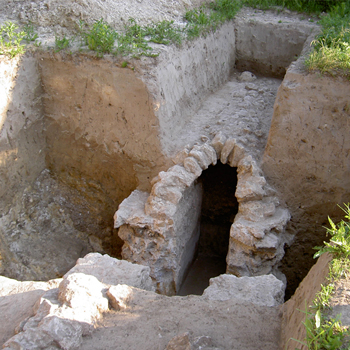
A water basin from the first construction phase of the palace, i.e. from the late 8th century, is located here.
- Find out more >
Northern wing interiors

The north tract consisted of the north wing and a hall building attached to it at right angles. The building complex had a total length of almost 77 m.
- Find out more >
Tri-Apsidal Church

The remains of the first Carolingian church building in the core district of the Carolingian palace can be found here under today's pavement.
- Find out more >
Semi-circular building "Heidesheim Gate"

The 89 metre wide semi-circular building was the most striking building in Charlemagne's palace and gave it its unmistakable layout.
- Find out more >
Fountain

A fountain shaft lies beneath the pavement at this point. It was created at the intersection of the longitudinal and transverse axis of the palace.
- Find out more >
Aula regia

The Aula regia (Throne hall) was one of the largest buildings in the palace. It served as a representative meeting place for the ruler.
- Find out more >
St Remigius' Church
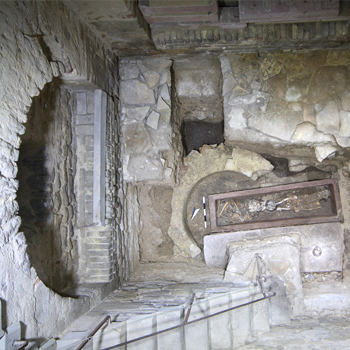
St Remigius' Church was built in the Merovingian period, well before construction of the Carolingian palace began.
- Find out more >
Saalkirche
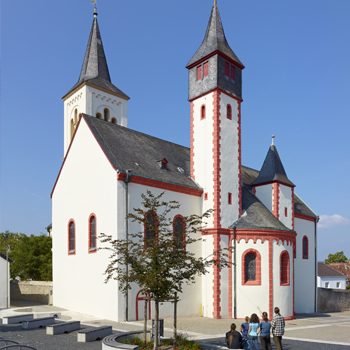
Older research saw the Saalkirche as Charlemagne's palace church. However, it was not built until the 11th or 12th century.
- Find out more >
Moat

Around the middle of the 12th century, a large moat (16 m wide, over 5 m deep) was constructed on the outside of the semi-circular building.
- Find out more >
Water pipeline outside

A small section of the long-distance water pipeline was uncovered on the Heidesheimer Weg between Ingelheim and the neighbouring village of Wackernheim.
- Find out more >
Defence wall "Heidesheim Gate"
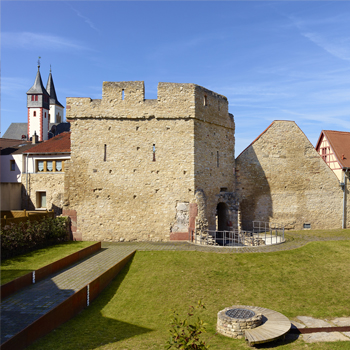
Two construction phases overlap here: the semi-circular building of Charlemagne's palace and a defence wall from the Staufer period, the so-called "Heidesheim Gate".
- Find out more >
Heating system

The shelter construction houses an exceptionally well-preserved heating system from around 1200.
- Find out more >
Defence tower "Bolander"
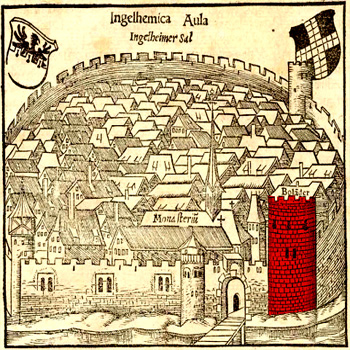
This defence tower was probably built around 1160 in the course of the renovation and defensive expansion of the palace, together with the defensive wall and a defensive moat.
- Find out more >
"Zuckerberg Gate"
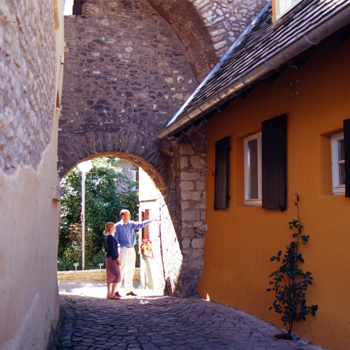
The "Zuckerberg Gate" formed a small passageway through the defence wall and is still the only gate of the Staufer fortifications that can be reliably traced.
- Find out more >
Defence wall
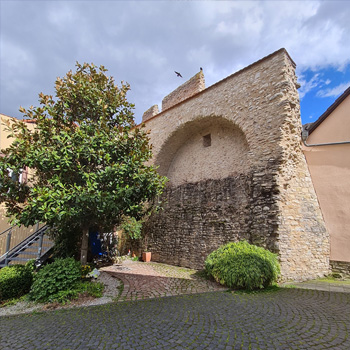
Parts of the defence wall that surrounded the palace from the 12th century onwards have been preserved in many parts of the imperial palace area.
- Find out more >
Staufer and citizens theme house

From the 16th century, the manorial building was transformed into a settlement area for the citizens of Ingelheim, who from then on settled in and around the palace.
- Find out more >
- Find out more >
Search for traces

Throughout the Archaeological Zone Kaiserpfalz, the former layout of the medieval palace can be seen through markings in the pavement.
- Find out more >
Fountain path
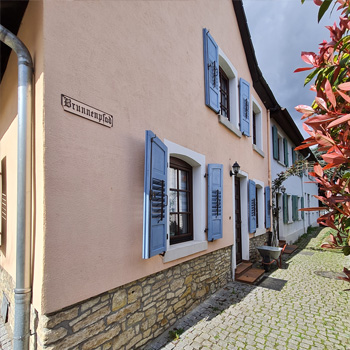
The fountain path originally ran along the outside of the medieval defence wall. Today, only a small section remains.
- Find out more >
Administration portal
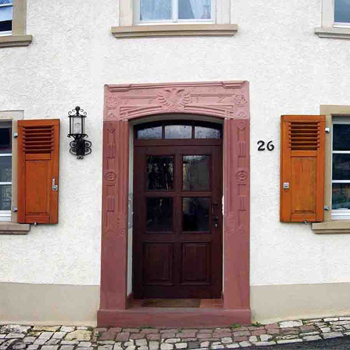
The door frame of the private property at Zuckerberg 26 probably belonged to the "Schaffnerei", which is the seat of a palace administrator.
- Find out more >
Jewish cemetery

A gate at this point leads to the grounds of a modern Jewish cemetery.
- Find out more >